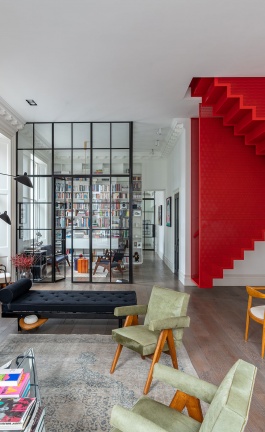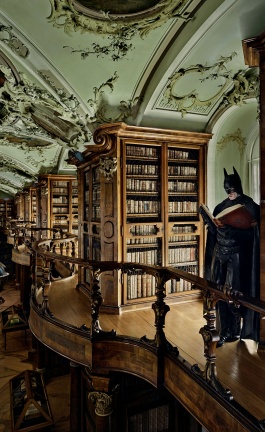Project Name
TECLA 3D Printed HouseLocation
Area (sqm)
60| Detailed Information | |||||
|---|---|---|---|---|---|
| Project Name | TECLA 3D Printed House | Location |
Massa Lombarda
Italy | Area (sqm) | 60 |
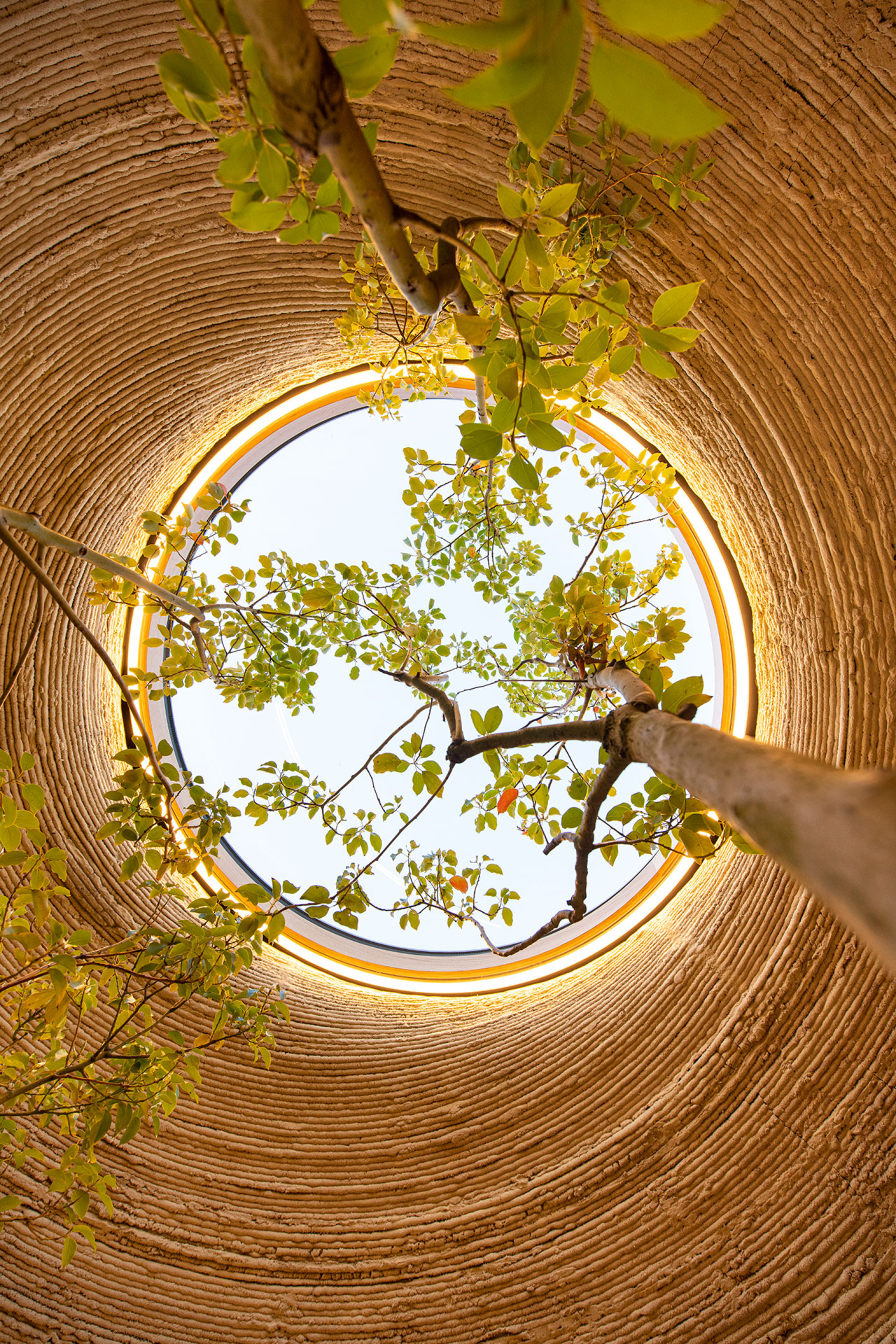
TECLA, 3D Printed Habitat by WASP and Mario Cucinella Architects. Photo by Iago Corazza.
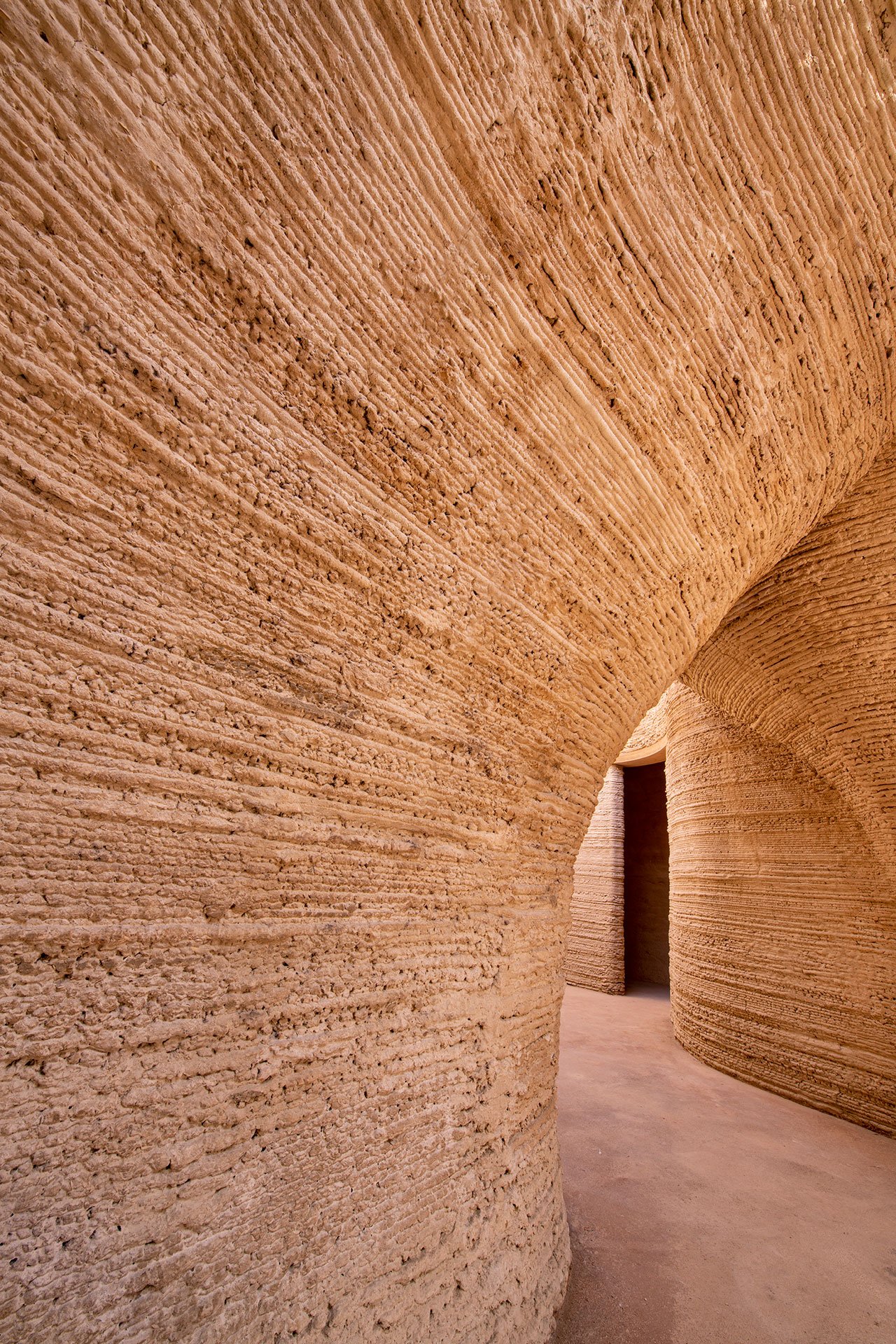
TECLA, 3D Printed Habitat by WASP and Mario Cucinella Architects. Photo by Iago Corazza.
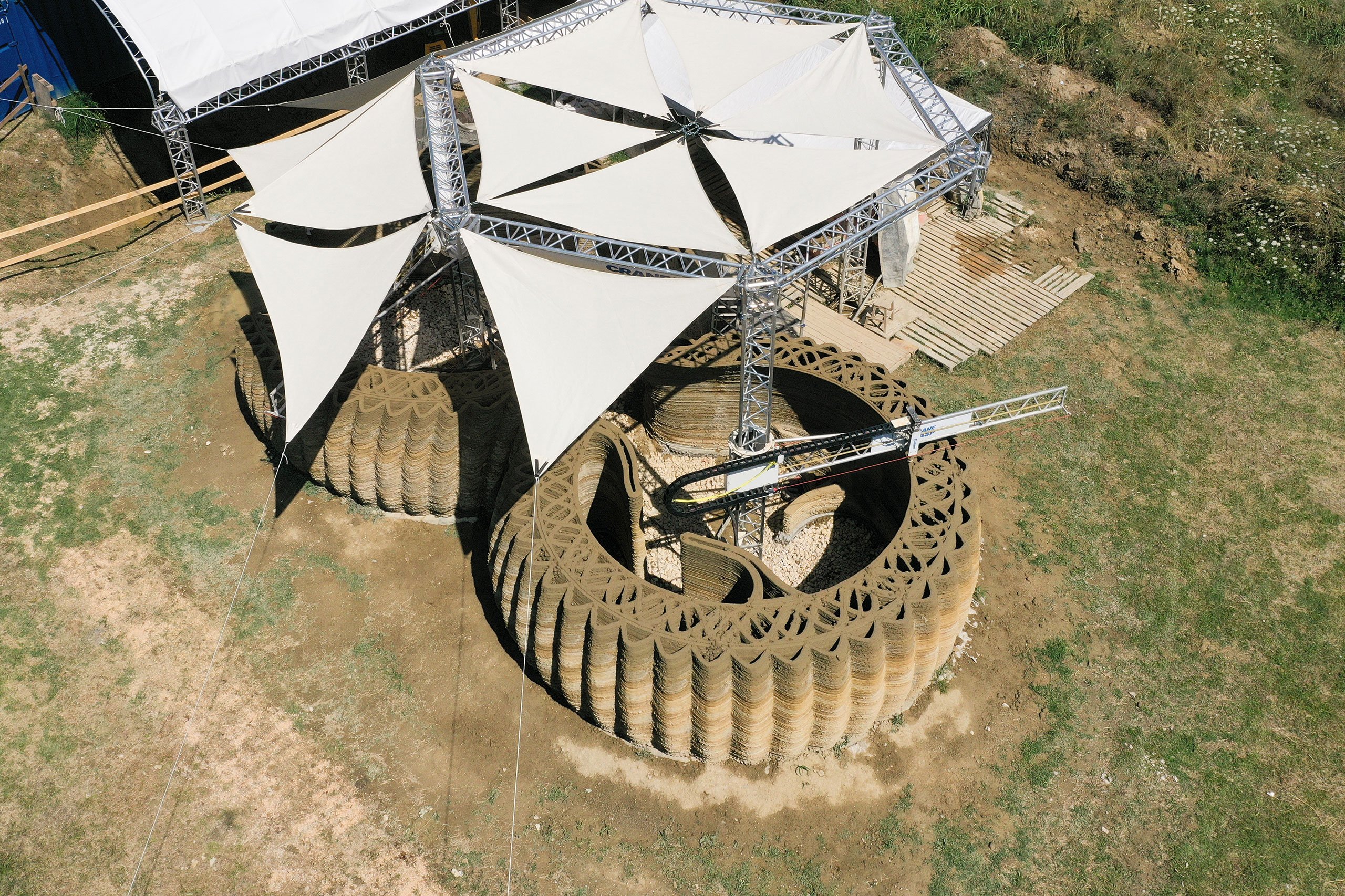
TECLA, 3D Printed Habitat by WASP and Mario Cucinella Architects © WASP
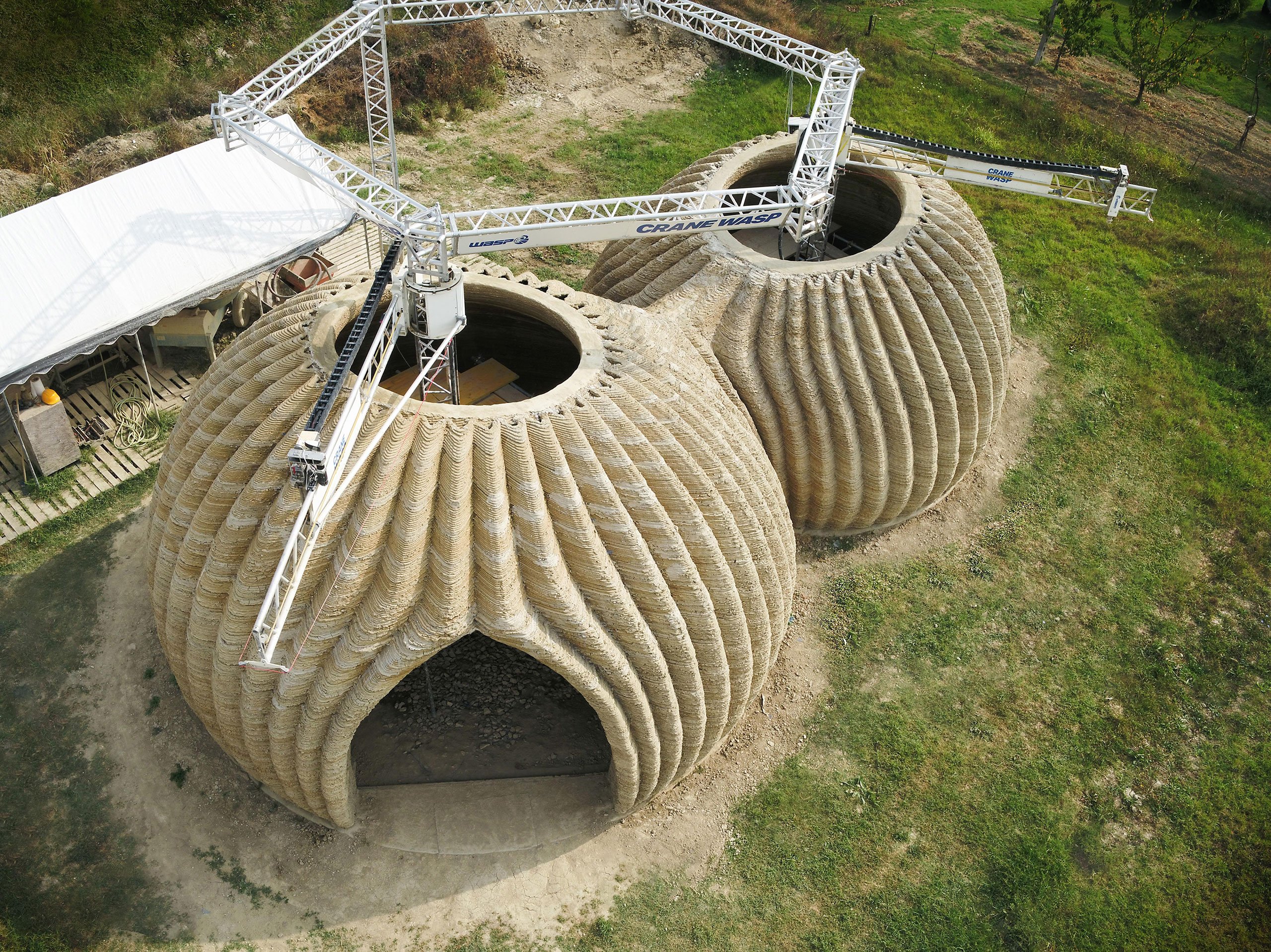
TECLA, 3D Printed Habitat by WASP and Mario Cucinella Architects © WASP
But how do you go about 3D printing a house using raw earth? To do so, the team employed WASP’s flagship 3D printing technology, the multi-printer Crane WASP system, a modular and multilevel printer arm whose uniqueness rests on its ability to work collaboratively with other units, a first in the construction industry. In TECLA’s case, two printer arms worked simultaneously in a carefully choregraphed, streamlined process, optimized by proprietary software, to build the entire house in just 200 hours.
The project’s ground-breaking construction process goes hand in hand with its sustainability credentials. Made entirely out of local soil, TECLA’s construction minimizes the use of human and energy resources and reduces waste to a minimum, making it a nearly zero-emission project. What’s more, both the composition of the earth mixture and the design of the building shell, whose rugged exterior belies intricately intertwined layers of sinuous forms, are optimized in order to balance thermal mass, insulation and ventilation according to local climatic conditions. By championing bioclimatic principles and sustainable design alongside digital fabrication and affordable housing, TECLA’s multipronged design, itself a reflection of its creative marriage of primeval building practices with advanced technology, offers a novel way to deal with the future housing emergencies that the unfolding climate crisis is bound to cause.
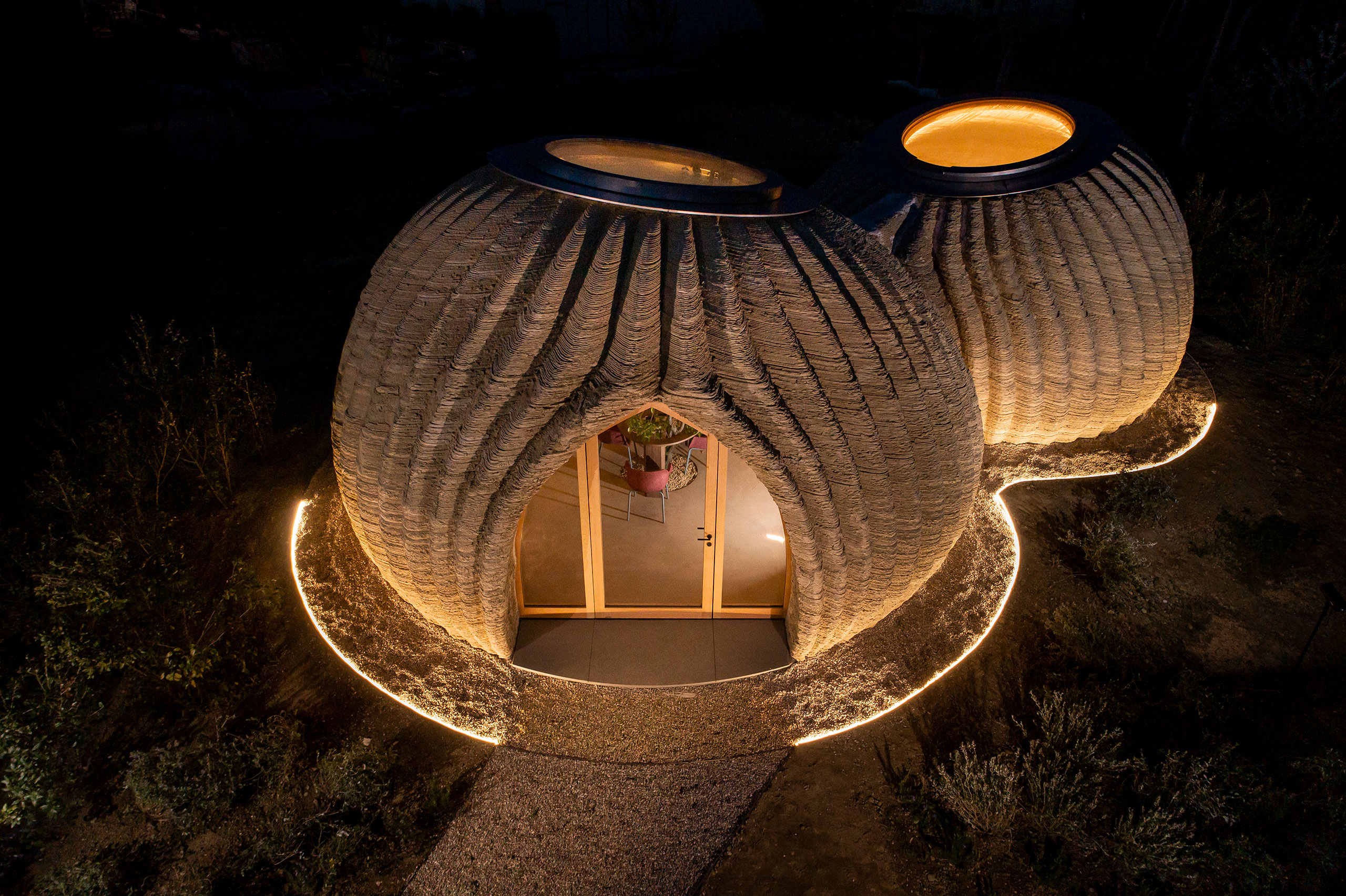
TECLA, 3D Printed Habitat by WASP and Mario Cucinella Architects. Photo by Iago Corazza.
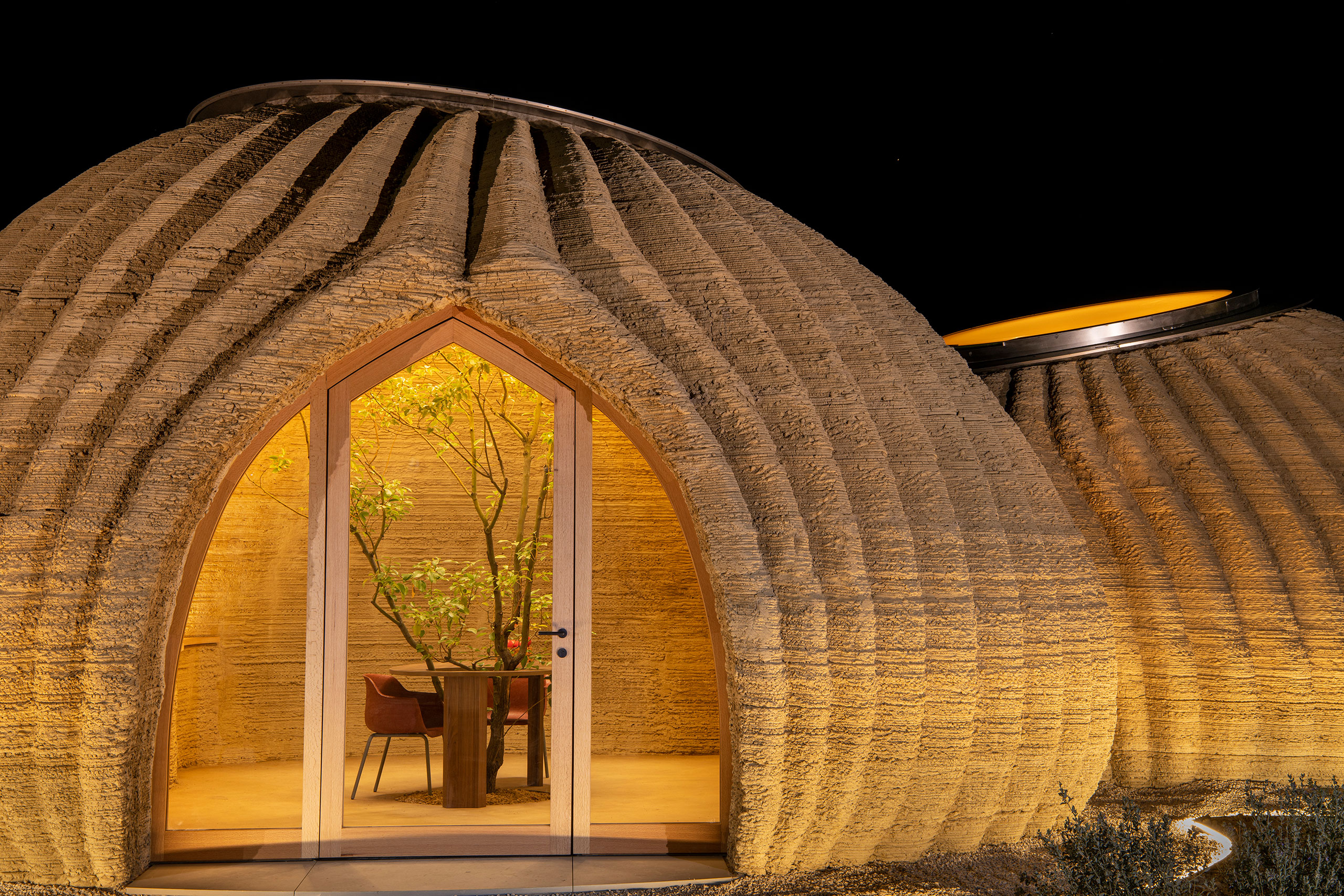
TECLA, 3D Printed Habitat by WASP and Mario Cucinella Architects. Photo by Iago Corazza.
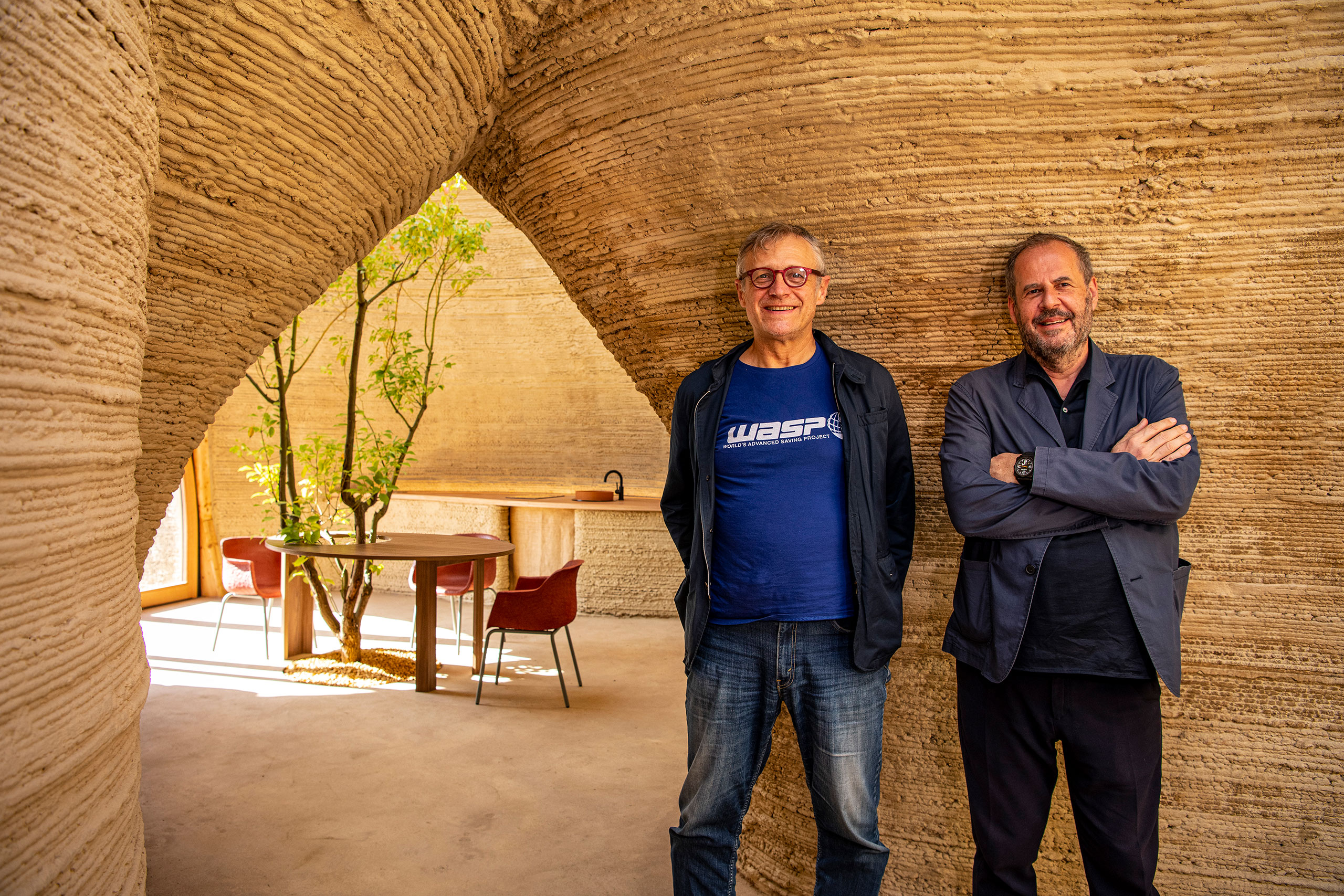
WASP CEO Massimo Moretti and Architect Mario Cucinella. Photo by Iago Corazza.





